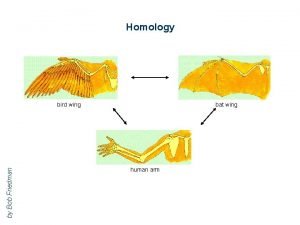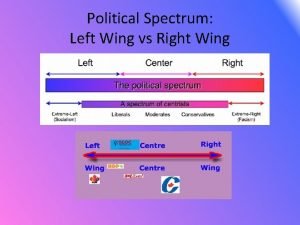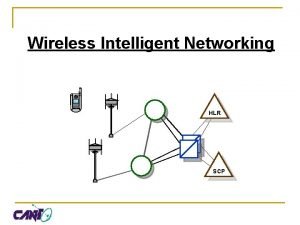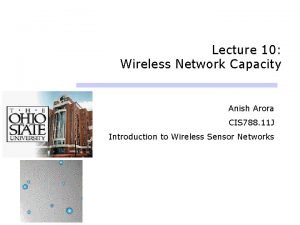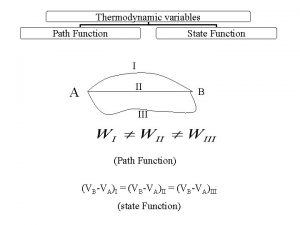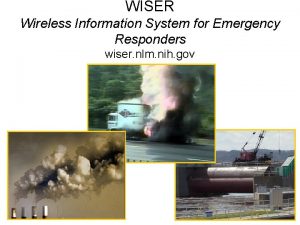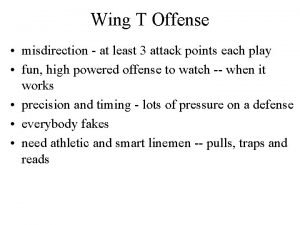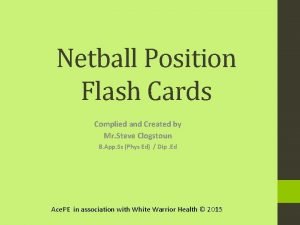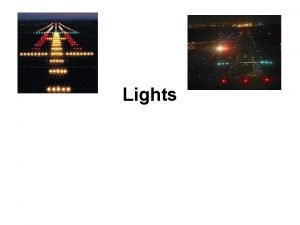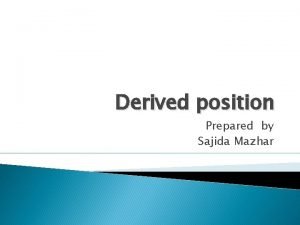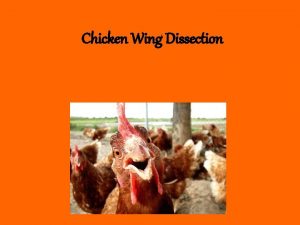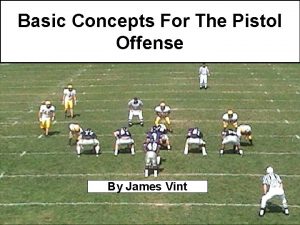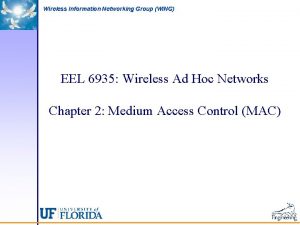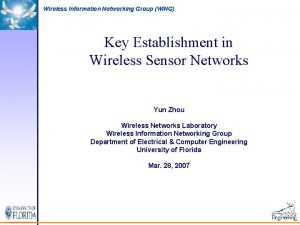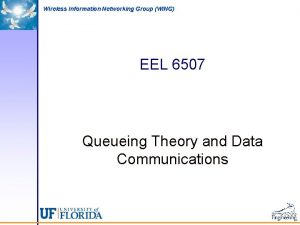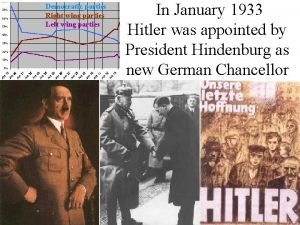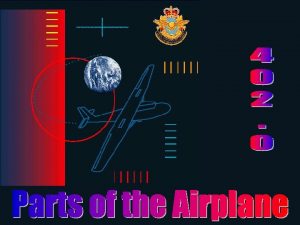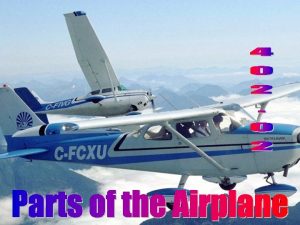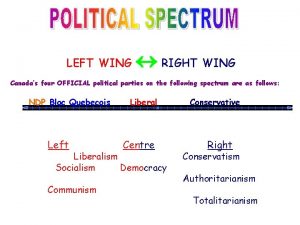Wireless Information Networking Group WING Path Capacity in
































- Slides: 32

Wireless Information Networking Group (WING) Path Capacity in Multirate and Multihop Wireless Networks Yuguang “Michael” Fang, Professor University of Florida Research Foundation Professor Wireless Networks Laboratory (WINET) Wireless Information Networking Group (WING) Department of Electrical & Computer Engineering University of Florida In Collaboration with Dr. Hongqiang Zhai Wireless Communications & Networking Department Philips Research North America

Wireless Information Networking Group (WING) Outline • Introduction • Path capacity and routing metrics • Performance evaluation • Conclusion

Wireless Information Networking Group (WING) Wireless Multihop Ad Hoc Networks

Wireless Information Networking Group (WING) Interesting Applications • Tactical ad hoc networks – First deployment in Iraq campaign (learn from Chip Elliot at BBN ) • Public safety – Hurricane Katrina (mesh networking) • Surveillance and tracking (sensor networking) Many applications demand some kinds of Qo. S!

Wireless Information Networking Group (WING) Design Challenges • Can we support the desired Qo. S? Particularly E 2 E Qo. S? E. g. , minimum e 2 e throughput? • Perceived to be a failed proposition! … • Wireless links are different! – Broadcast in nature, interference, mobility, time-varying channel – Low reliability, channel errors, packet loss rate – Multiple rates • 802. 11 b: 1, 2, 5. 5, and 11 Mbps • 802. 11 a/g: 6, 9, 18, 24, 36, and 54 Mbps – Current MANETs have not taken advantage of “plenty of resource”! • Need a better understanding of networking capability!

Wireless Information Networking Group (WING) IEEE 802. 11 MAC Problems in MANETs • • Low throughput Hidden terminal problem Exposed terminal problem Limitations on NAV procedure Receiver blocking problem Intra-flow contention Inter-flow contention Limitations on the use of single channel

Wireless Information Networking Group (WING) Intra-Flow Contention • • Intra-flow contention is the contention from the transmissions of packets at upstream and downstream nodes along the path of the same flow. Packets may continuously accumulate at the first few hops of the path because the transmission at the first few hops encounters less contention that at subsequent nodes. Nodes separated by fixed length less than the maximum transmission range. Transmission from the first node is interfered with by three subsequent nodes. The number is four for the second one and five for the third node. The first node could inject more packets into the chain than the subsequent nodes could forward, leading to congestion!

Wireless Information Networking Group (WING) Inter-Flow Contention • Inter-flow contention occurs when two or more flows pass through the same region. • This region becomes the bottleneck and could make it severer to accumulate packets at some nodes. Node 4 and 11 encounter the most frequent contentions and have little chance to successfully transmit packets to their downstream nodes. Packets will accumulate at and be dropped by node 1, 2, 3, 4, 8, 9, 10, and 11.

Wireless Information Networking Group (WING) Impact of Multiple Rates on Routing Metrics • Be careful with your intuition! – E. g. , a multi-rate network should use the highest supported data rate for each link • A higher rate for a good link where the hop distance is short • A lower rate for a poor link where the hop distance is long – However, if hop count is used as the routing metric, • A multi-rate network may perform worse than a single-rate network. (V. Kawadia and P. R. Kumar, IEEE Wireless Communications, Feb 2005) – minimum hop algorithm often choose long hops with low data rates • A single rate network may have one best single rate – To maintain connectivity – To get higher end-to-end throughput – A good routing metric is necessary to utilize the advantages of multiple rates. 11 Mbps

Wireless Information Networking Group (WING) Routing Metrics and Path Capacity • Routing metrics (some arising from cross-layer design) – – Hop count Rate: data rates over wireless links ETX: expected transmission count (Mobicom’ 03) ETD: end-to-end transmission delay • WCETT: weighted cumulative expected transmission time (Mobicom’ 04) • MTM: medium transmission time metric (MONET’ 06) – BDi. P: bandwidth distance product, or link rate times hop distance (Infocom’ 06) • It has been shown to have 27% and 12% higher throughput than routing metrics hop count and rate in a random chain topology, respectively. • Path capacity – The maximum throughput of the path (e 2 e Qo. S)

Wireless Information Networking Group (WING) Example Path 1 2 3 4 Throughput (Mbps) 2/3 54/12 =4. 5 S 1 to D 1 Path 1: hop count, ETX 54 Mbps Path 2: rate, ETD, BDi. P S 2 to D 2 Path 3: hop count, ETX, ETD Path 4: rate, BDi. P 2 Mbps Routing metrics do have significant impacts on the path capacity

Wireless Information Networking Group (WING) Path Capacity and Routing Metrics • Impacts of multirate capability on path selection • Extended link conflict graph and a new routing metric • Path capacity • Using routing metrics in path selection

Wireless Information Networking Group (WING) Multiple Rates over Wireless Links • Requirements for correct reception – Receiver sensitivity • Received signal strength is higher than a certain threshold – SINR (signal-to-interference-plus-noise ratio) • SINR has to be larger than a certain threshold An IEEE 802. 11 a system

Wireless Information Networking Group (WING) Multiple Rates over Wireless Links • Tradeoff between rate and distance • Carrier sensing range and spatial reuse • Protocol overhead for different rates – Effective data rate rd

Wireless Information Networking Group (WING) Extended Link Conflict Graph • Conflict between links – wij describes the impact of link i on link j. • (Maximum) Independent set S – All links in S can successfully transmit at the same time • For all j in S, if • (Maximum) Interference clique C – Any two links in C cannot successfully transmit at the same time

Wireless Information Networking Group (WING) Clique Transmission Time and Path Capacity • Interference clique transmission time (CTT) TC – Tl: transmission time for a packet over link l – S: the set of all the maximum interference cliques – Lp: packet size CP: path capacity

Wireless Information Networking Group (WING) A New Routing Metric: CTT One optimum scheduling Time slot 1 2 3 4 5 6 7 Scheduled links 1 2 3 4 5 6 7 1 2 3 • Upper bound of path capacity: • Local interference clique transmission time (LCTT): – Local interference clique: an interference clique with a series of adjacent links along the path • New routing metrics: CTT and LCTT

Wireless Information Networking Group (WING) Path Capacity Problem • Notation – P: the set of links in a given path – Eα (1≤α ≤M): independent sets, Eα is a subset of P – λα: time share scheduled to Eα – Rα: a row vector of effective data rates for Eα – f: demand vector – CP: path capacity , feasible:

Wireless Information Networking Group (WING) Data Rates over Links • For each independent set Eα – Calculate the received power level Pr and SINR – Select the highest rate rd satisfying the requirements of receiver sensitivity and SINR – Consider the packet error rate per • r=rd × (1 -per)

Wireless Information Networking Group (WING) Optimization Problem for Path Capacity Linear programming problem

Wireless Information Networking Group (WING) A Feasible Scheduling from the Solution • Schedule S – S={λα, 1≤α ≤M} • • Time is divided into slots of duration τ seconds τ is partitioned into M subslots, each lasts λατ seconds Links in Eα are scheduled to transmit in the αth subslot In each slot τ, throughput fe over link e is • Path capacity CP = fe

Wireless Information Networking Group (WING) Extension to Multiple Paths • Notation – – Pk (1≤ k ≤K): the set of links in path k fk: end-to-end throughput of path k P: I(Pk): a row indicator vector • Maximize aggregate end-to-end throughput

Wireless Information Networking Group (WING) Optimum Path in Multirate Wireless Networks From source s to destination t Max-flow problem Multiple paths Linear programming Unicast and single-path routing Mixed integer-linear programming

Wireless Information Networking Group (WING) Routing Metrics and Algorithms • Routing algorithms – – – min-hop: the smallest hop count or ETX min-delay: the shortest (expected) end-to-end transmission delay max-rate/maxmin-rate: the widest bottleneck link rate max-BDi. P/maxmmin-BDi. P: the widest bottleneck link BDi. P min-CTT/minmax-CTT: the smallest bottleneck CTT min-LCTT/minmax-LCTT: the smallest bottleneck LCTT • Generalized Bellman-Ford algorithm – A routing algorithm for additive routing metrics • min-hop, min-delay – Easy to be generalized to a widest routing algorithm • max-rate, max-BDi. P, min-CTT, min-LCTT

Wireless Information Networking Group (WING) Performance Evaluation • Simulation setup – N nodes: randomly distributed in the network – Channel rates: 54, 18, 11, 6, 1 Mbps • 802. 11 b rates: 11, 1 Mbps • 802. 11 g rates: 54, 18, 11, 6 Mbps – – – – Transmission radii: 76, 183, 304, 196, 610 m Interference range: 900 m Packet size: 1000 bytes Two-way handshake: DATA/ACK Source: the node nearest to the upper left corner Destinations: N-1 choices Performance metric: path capacity

Wireless Information Networking Group (WING) Comparison with Optimal Routing • N = 25 nodes, 200 m X 2500 m

Wireless Information Networking Group (WING) • Comparison of Six Metrics in a Larger Topology N = 400 nodes, 1500 m X 300 m

Wireless Information Networking Group (WING) Path Length and Computational Time

Wireless Information Networking Group (WING) Multi-Rate Network vs. Single-Rate Network

Wireless Information Networking Group (WING) How Can We Utilize the “Available” Resources? • Current MANETs – Single-channel, single rate, single power level…. • “Available” resources – – – Multiple rates Multiple channels Multiple power levels Multiple antennas Multiple radios (cognitive radios) • Need to find efficient ways to utilize them!

Wireless Information Networking Group (WING) Current Research • Path capacity analysis • Multi-channel interference analysis – Conduct experiments on mesh network testbed – Theoretical modeling – Flow/link scheduling on mesh networks • Channel assignment for multi-radio and multichannel systems (diversity) • Directional wireless networks – Connectivity and capacity – Flow/link scheduling

Wireless Information Networking Group (WING) Conclusion • Routing metrics have significant impacts on path capacity in multirae and multihop wireless networks • An upper bound of path capacity is found • A new routing metrics is found – Interference clique transmission time (CTT) • Finds paths with up to 10% higher throughput than e 2 e min-delay, and even much higher than others • An optimization problem is formulated to find the path capacity in multirae and multihop wireless networks • Multi-rate networks are better than single-rate networks – However, we should be careful to choose an appropriate routing metric
 Bird wing vs bat wing
Bird wing vs bat wing Wings of politics
Wings of politics Traditional network vs sdn
Traditional network vs sdn Any time interrogation call flow
Any time interrogation call flow Wireless network definition
Wireless network definition Telecommunications, the internet, and wireless technology
Telecommunications, the internet, and wireless technology Wireless network capacity
Wireless network capacity Production units have an optimal rate of output where:
Production units have an optimal rate of output where: Heat capacity is path function
Heat capacity is path function Hot path cold path
Hot path cold path Information centric networking
Information centric networking Wiser artinya
Wiser artinya Gartner infrastructure and operations
Gartner infrastructure and operations Information carrying capacity of hologram is
Information carrying capacity of hologram is Delaware wing t formations
Delaware wing t formations Kill wing valve
Kill wing valve Airfoil characteristics
Airfoil characteristics Power pistol offense playbook pdf
Power pistol offense playbook pdf Wingover maneuver
Wingover maneuver Wing attack netball
Wing attack netball Cantilever wing
Cantilever wing Runway light
Runway light Human arm bat wing whale flipper
Human arm bat wing whale flipper Wing shape
Wing shape Qing social structure
Qing social structure Standing position muscle work
Standing position muscle work Curriculum development process in pakistan
Curriculum development process in pakistan Jeannette m. wing
Jeannette m. wing Chicken wing ligament
Chicken wing ligament Claws of birds and their uses
Claws of birds and their uses Pistol jet sweep
Pistol jet sweep Saf/fmb
Saf/fmb Lorna wing triada
Lorna wing triada
